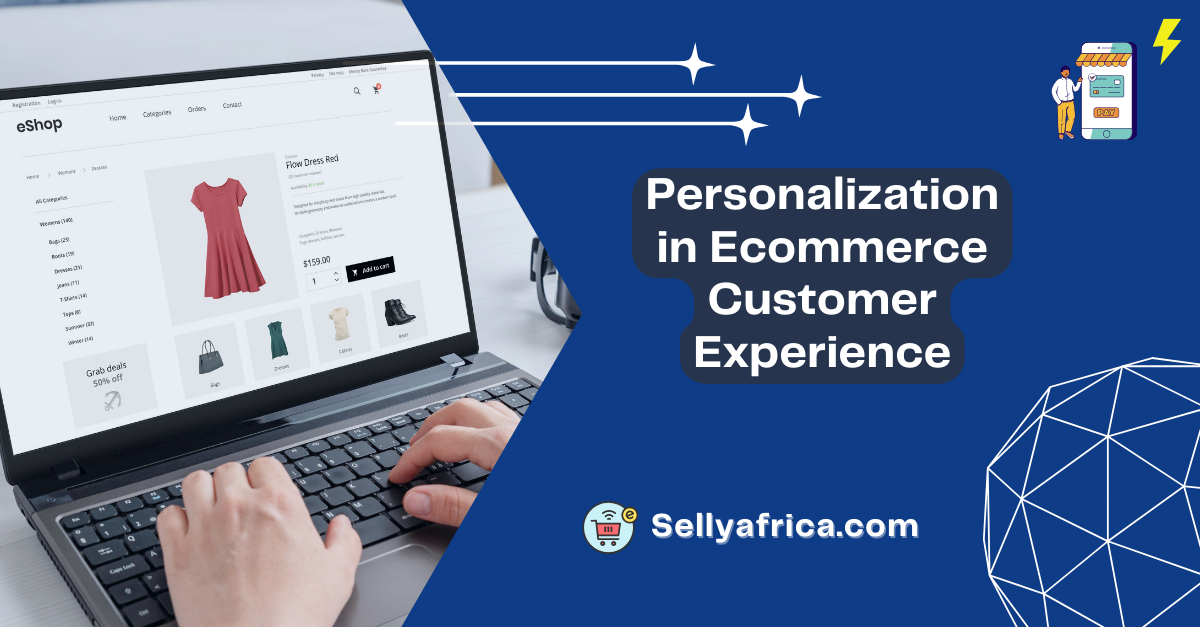In the bustling world of eCommerce, where competition is fierce and options are endless, one thing stands out as a game-changer: personalization. Imagine walking into a store where the staff knows your name, remembers your preferences, and suggests products tailored just for you. That’s the magic of personalization, and it’s transforming the online shopping experience. Let’s dive into how personalization can elevate your eCommerce business and create unforgettable customer experiences.

Understanding Personalization in eCommerce
What is Personalization?
Personalization in eCommerce refers to the practice of tailoring the shopping experience to individual customers based on their preferences, behaviors, and past interactions. It’s about making each customer feel special and understood. Think of it as a digital concierge service that anticipates your needs before you even express them.
Why is Personalization Important?
In a world where consumers are bombarded with choices, personalization helps brands stand out. It enhances customer satisfaction, increases engagement, and ultimately drives sales. When customers feel valued and understood, they’re more likely to return and recommend your brand to others. It’s like having a secret weapon in your marketing arsenal!
The Benefits of Personalization
1. Enhanced Customer Experience
Creating a Seamless Journey
Personalization makes the shopping experience smoother and more enjoyable. By providing tailored recommendations and relevant content, you guide customers through their journey, making it easier for them to find what they’re looking for. It’s like having a GPS that leads them directly to their destination!
2. Increased Conversion Rates
Turning Browsers into Buyers
When customers see products that resonate with their interests, they’re more likely to make a purchase. Personalized product recommendations can significantly boost conversion rates. It’s like having a friend who knows exactly what you want and nudges you to buy it!
3. Improved Customer Loyalty
Building Lasting Relationships
Personalization fosters a sense of connection between the brand and the customer. When customers feel valued, they’re more likely to return for future purchases. This loyalty can lead to repeat business, which is often more cost-effective than acquiring new customers. It’s like nurturing a friendship that grows stronger over time.
4. Higher Average Order Value
Encouraging Upsells and Cross-Sells
Personalization opens the door for upselling and cross-selling opportunities. By suggesting complementary products based on a customer’s previous purchases, you can increase the average order value. It’s like a well-timed suggestion from a knowledgeable friend who knows your taste!
How to Implement Personalization in eCommerce
1. Collect and Analyze Customer Data
Understanding Your Audience
The first step in personalization is gathering data about your customers. This includes their browsing behavior, purchase history, and demographic information. Use analytics tools to gain insights into what your customers want and how they interact with your site. It’s like gathering intel to better understand your audience!
2. Segment Your Audience
Tailoring Your Approach
Once you have the data, segment your audience into different groups based on shared characteristics or behaviors. This allows you to create targeted marketing campaigns that resonate with each segment. It’s like throwing a party and inviting only those who share similar interests!
3. Personalize Product Recommendations
Making Relevant Suggestions
Use algorithms to analyze customer data and provide personalized product recommendations. For example, if a customer frequently buys running shoes, suggest related items like athletic apparel or accessories. It’s like having a personal shopper who knows exactly what you need!
4. Customize Email Marketing Campaigns
Reaching Out with Relevance
Email marketing is a powerful tool for personalization. Send tailored emails based on customer behavior, such as abandoned cart reminders or personalized product suggestions. This approach increases the likelihood of engagement and conversions. It’s like sending a thoughtful note that shows you care!
5. Leverage Dynamic Content
Adapting to Individual Preferences
Dynamic content allows you to change website elements based on user behavior. For instance, you can display different banners or promotions to returning customers versus new visitors. This creates a more relevant experience for each user. It’s like adjusting the music playlist based on the mood of your guests!
Challenges of Personalization
1. Data Privacy Concerns
Navigating the Fine Line
With great power comes great responsibility. While personalization relies on customer data, it’s crucial to handle this information ethically and transparently. Customers are increasingly concerned about their privacy, so ensure you comply with regulations and communicate how their data is used. It’s like earning trust by being open and honest!
2. Implementation Costs
Implementing personalization strategies may require investment in technology and tools. From analytics software to CRM systems, the costs can add up. However, the long-term benefits often outweigh the initial expenses. It’s like investing in a quality tool that will pay off in the long run!
Measuring the Success of Personalization
1. Key Performance Indicators (KPIs)
Tracking Your Progress
To understand the effectiveness of your personalization efforts, it’s essential to track relevant KPIs. Metrics such as conversion rates, average order value, and customer retention rates can provide insights into how well your strategies are working. It’s like keeping score in a game to see how you’re performing!
2. Customer Feedback
Listening to Your Audience
Another way to measure success is by gathering customer feedback. Surveys and reviews can help you understand how customers perceive their personalized experiences. This feedback is invaluable for refining your approach. It’s like having a conversation with a friend to learn what they truly think!
Future Trends in Personalization
1. AI and Machine Learning
The Next Frontier
As technology advances, AI and machine learning will play a significant role in personalization. These tools can analyze vast amounts of data to predict customer behavior and preferences more accurately. It’s like having a crystal ball that helps you anticipate what your customers want!
2. Hyper-Personalization
Going Beyond Basics
Hyper-personalization takes personalization to the next level by using real-time data to create highly tailored experiences. This could include personalized landing pages or unique offers based on current browsing behavior. It’s like crafting a bespoke experience just for one individual!
Conclusion
Personalization in eCommerce is not just a trend; it’s a necessity for businesses looking to thrive in a competitive landscape. By understanding your customers, implementing effective strategies, and continuously measuring your success, you can create a shopping experience that resonates deeply with your audience. Remember, personalization is about making your customers feel valued and understood, which ultimately leads to loyalty and increased sales. So, embrace the power of personalization and watch your eCommerce business flourish!
FAQs
1. What is the main benefit of personalization in eCommerce?
The main benefit is enhanced customer experience, leading to increased satisfaction, loyalty, and sales.
2. How can I start personalizing my eCommerce site?
Begin by collecting customer data, segmenting your audience, and implementing personalized product recommendations and marketing campaigns.
3. Are there any risks associated with personalization?
Yes, data privacy concerns and the costs of implementing personalization strategies can pose challenges.
4. How do I measure the success of my personalization efforts?
Track key performance indicators (KPIs) such as conversion rates, average order value, and gather customer feedback.
5. What future trends should I watch for in eCommerce personalization?
Keep an eye on advancements in AI and machine learning, as well as the rise of hyper-personalization for more tailored customer experiences.
